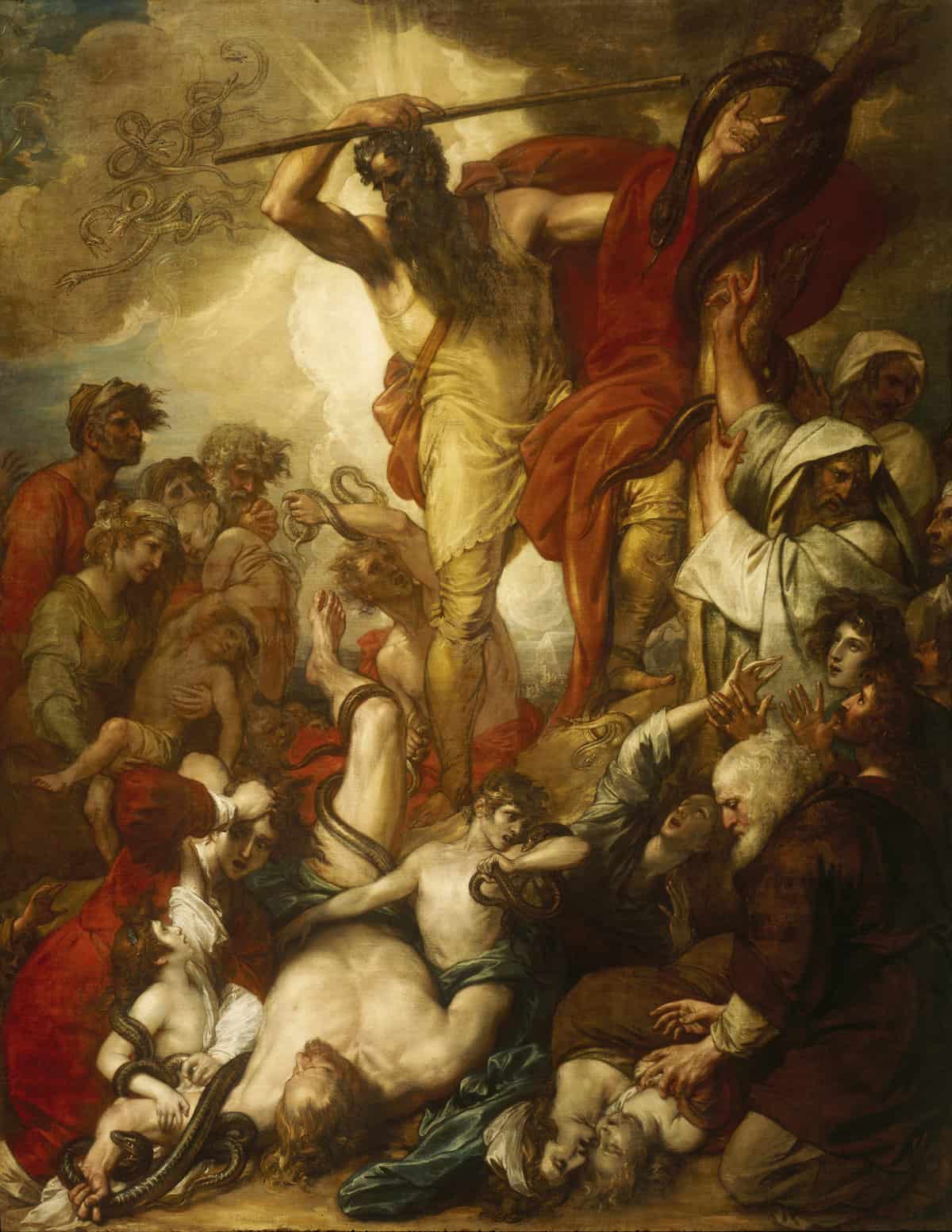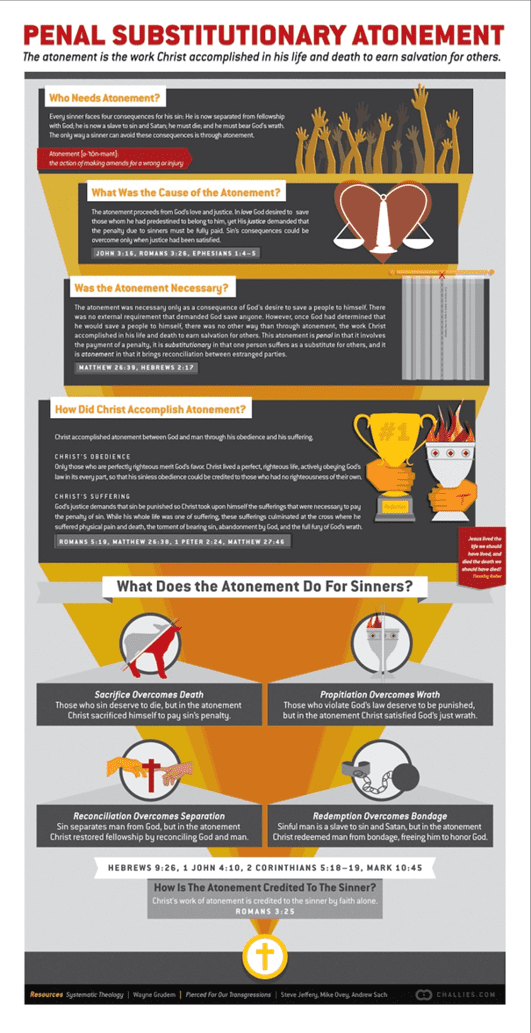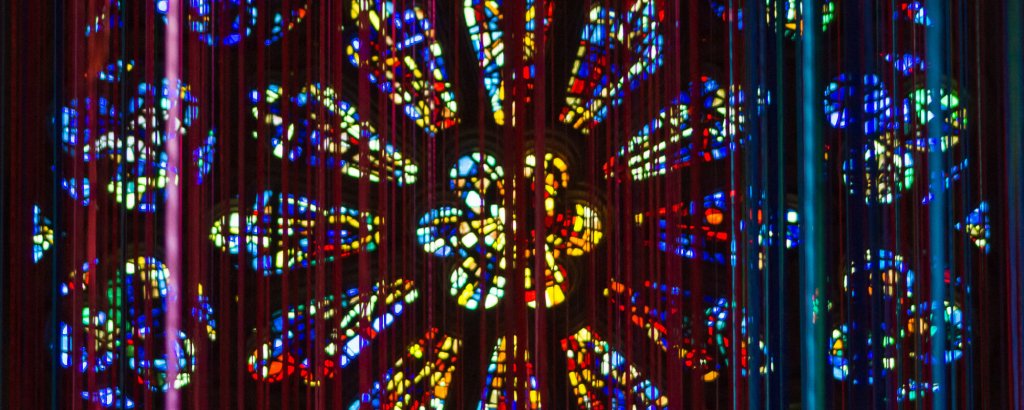Within Christianity and evangelicalism more specifically, theology has always been an act of the word. This article argues for an expanded definition of theology to include theology produced in a visual and not just a verbal language. Theology is more than “words about God.” It can rightly be thought of more broadly as “discourse about God” and as a result should be associated with visual as well as verbal inquiry. This paper uses Millard J. Erickson’s definition of theology as “that discipline which strives to give a coherent statement of the doctrines of the Christian faith, based primarily upon the scriptures, placed in the context of the culture in general, worded in a contemporary idiom, and related to issues of life” to argue that visual expression and artistic production fit the definition of theology and, in fact, may address some theological concepts more appropriately than verbal inquiry. Erickson’s definition contains four requisite elements. Theology must be 1) coherent, 2) within the context of culture, 3) in contemporary idiom, and 4) related to issues of life. All of these can be fulfilled by visual inquiry. It may be that the same eternal nature that resides within humanity pushes us toward both theological and artistic expression. If that is so, they are likely both different expressions of the same. Verbal theology and visual theology are, in the end, both theology.
Visual Theology?
The Nagel Institute for the Study of World Christianity at Calvin University launched a series of cross-cultural seminars in 2008. Nagel chose to begin their series of seminars with “Christianity, Contextualization, and the Arts” based in Indonesia. Eight professors from North America were selected to interact with ten Asian and Pacific Rim artists and theorists over the course of two weeks. Since that inaugural seminar, Nagel has run seminars on a variety of issues in China, Honduras, South Africa, and Brazil on subjects of practical and theological concern to world Christianity. The Indonesia Seminar was followed by Charis: Crossing Boundaries, an exhibition that primarily toured North America at Universities and Seminaries. The connection between Christianity and the arts was so broadly accepted with enthusiasm that Nagel held a second seminar on Christianity and the Arts in South Africa in the summer of 2013 and is organizing a third in China for 2018.
I was fortunate enough to be selected as one of the North American participants for the 2008 seminar in Indonesia. At that seminar, I spent time with artists who were deeply interested in and influenced by theology. I had long known that many artists of faith considered their artistic practice to be a part of their spiritual discipline, often considering their studio time to be a part of their prayer life. However, I was struck by the comment of New Zealand Theologian Ron O’Grady, Co-Founder of the Asian Christian Art Association, who our weeks together simply said, “Artists do theology.” Given the evangelical culture of the word (logos), the notion that the visual can indeed be “theology” is in many ways shocking.
This paper will use Millard Erickson’s broadly accepted, within evangelical circles, definition of theology as a filter through which to examine whether artistic acts and production, particularly the visual, can be rightly categorized as theological.
Defining Theology
At first brush, the idea that visual artists in some way “do” theology may seem odd. Theology for most individuals is associated with verbal, not visual, inquiry. Theologian Alister McGrath has defined theology as “discourse about God.” He comes to this definition through an etymological approach. McGrath explains, “The word can be broken down into two constituent elements, based on the Greek word theos (“god”) and logos (“word” or “discourse”). Theology could thus be said to be ‘discourse about God,’ in much the same way as biology is ‘discourse about life.’” Of course, most people think of discourse as a verbal activity. Given McGrath’s logic, theology could also be thought of as “words about God.” The most famous use of the word logos in the New Testament is from the first chapter of the Gospel of John. That passage famously begins “In the beginning was the Word (logos), and the Word (logos) was with God, and the Word (logos) was God.” (John 1:1). This translation has affected how evangelicals view the term logos. Combined with the Protestant focus on the Bible as the only rule of faith and the largely conservative evangelical doctrine of the inerrancy of scripture, this conception of logos has become even more powerful. The Word, for many evangelicals, becomes both Christ and the Bible. This is not to say that evangelicals have deified the Bible; however, there has certainly been veneration among major branches of evangelicalism. The point here, though, is simply that in the evangelical cultural mind theology is in fact “words about God.”
A more careful definition of theology, however, may yield a more complex understanding. While etymology is helpful it does little to explain the nuances of contemporary usage. Millard J. Erickson provides several ways of considering theology. His Concise Dictionary of Christian Theology defines theology similarly to McGrath in a word-centered manner. Theology proper is defined as the “study of the doctrine of God” and doctrine is defined as “a belief or teaching regarding theological themes, that is, a tenet regarding the nature of God and his works.” While the verbal terminology is not explicit in these definitions it seems clear enough that doctrine is verbal within the evangelical tradition. There may be some room to negotiate non-verbal forms of belief but this definition is not meant to be exhaustive and most properly simply demonstrates the tendency within Christianity to naturally and even subconsciously associate theological inquiry with a verbal format.
Erickson, fortunately, provides a much more nuanced definition of theology in his exhaustive work Christian Theology. He provides the initial definition of theology as, [t]he study or science of God.” From there, Erickson argues that God is an “active being” necessitating this simple definition be expanded to include the relational aspect of God. Therefore, “[t]heology will also seek to understand God’s creation, particularly man and his condition.” For Erickson, this distinction is crucial. Theology must not simply focus on God as “other.” It must be relevant to God’s creation and explore how God is “active” in the created world. Erickson then proposes this expanded definition of theology: “that discipline which strives to give a coherent statement of the doctrines of the Christian faith, based primarily upon the scriptures, placed in the context of the culture in general, worded in a contemporary idiom, and related to issues of life.” There is little doubt that Erickson views theology as a verbal science. He follows the above definition with four deductions about theology. The first two—theology is biblical and theology is systematic—clearly demonstrate the verbal nature of theology to Erickson. He argues that theology uses canonical biblical texts as the primary source of content and that this should be done in a systematic way that pays proper attention to context and proportion forming a coherent whole. Further, within Erickson’s definition theology must be “worded in contemporary idiom.” It is clear that for Erickson the proper expression of theology is verbal.
Yet, Erickson’s definition does provide a pathway through which to consider the possibility of a visual theology or, at least, theological reflection and exploration undertaken in a visual language. Erickson’s definition contains four requisite elements. Theology must be 1) coherent, 2) within the context of culture, 3) in contemporary idiom, and 4) related to issues of life.
Theology Must Be Coherent
Coherence, in this context, implies a logical ordering. If someone were to make an argument that logically contradicted itself, we would say that such an argument is incoherent. However, there can also be an aesthetic element to the concept of coherence. Implicit in the idea of logical order is unity. That which is logically ordered will have a logical unity. That is to say, the ideas and arguments will cohere into a non-contradictory unity. Coherence in this way has a clear aesthetic corollary. When an artist is said to have produced a coherent body of work, one is saying that the artist’s body of work has a unity and interior logic that holds the pieces together. The complicating factor in Erickson’s concept of coherence is that his concept is necessarily a “statement of the doctrines of the Christian faith, based primarily upon the scriptures.” The question then becomes—can an artwork be a statement of Christian doctrine based primarily on the scriptures? The answer to this lies in expanding our conception of statement.
Statement like logos is often thought of in verbal terms. However, the Greek term logos actually means “the expression of thought” in contrast to the word rhema which means “that which is spoken, what is uttered in speech or writing.” In essence, the difference is between the expression of a thought and a particular way of expressing a thought. In other words, rhema may be viewed as a subset of logos. The question in terms of statement is then one of set or sub-set. For example, in a basketball game, a player may want to express to the opposing team the thought “We will win this game.” The player may choose to express that thought by yelling at the opposing team, “You’re gonna lose!” Or the player may emphatically slam dunk the basketball or block a shot, “sending it into the rafters.” In this example, the larger set is the expression of a thought (logos) with two sub-sets of verbal expression (rhema) and physical expression. Both expressions carry the same meaning; yet, there is a question of fittingness. Which expression is most fitting for the context? It can certainly be argued that in this context the physical expression is more meaningful and perhaps even more profound than the verbal expression. In this example, the most powerful expression of the logos is the physical expression. The clearest statement is the one the player makes with his body, not mouth. Statement viewed this way allows for a fuller and more profound expression of logos.

Implicit in this discussion is the understanding that communication happens through symbol or metaphor. Words have no intrinsic meaning. Each word is an agreed upon metaphor for an idea—each rhema is a metaphor for a logos. Dog (English), perro (Spanish), and hund (German) are verbal expressions for the same concept. All language, including visual language, works this way. There are quite obviously many visual metaphors that correlate with dog, perro, and hund. But, from language to language, however, metaphors function differently. Verbal language often functions with greater specificity while visual language can be more holistic. Take Gustave Courbet’s painting, Hunting Dogs with Dead Hare. There is a tremendous amount of specificity in this painting that can be described in many words. The holistic character of the painting, however, is much more difficult to capture verbally. Ultimately, those attempting to fully describe a painting simply say, “You’ll just have to see it.” This is an issue of translation. It is important to understand that all language functions through metaphor but languages can use metaphor differently. It is also important to note that at times even verbal language seeks to function visually. This is due, at least in part, to the human proclivity to think verbally, visually, and intuitively. Take the biblical story of the Brazen Serpent, “So Moses made a bronze serpent, and put it on a pole; and so it was, if a serpent had bitten anyone, when he looked at the bronze serpent, he lived.” (Numbers 21:9) Moses sculpted the bronze serpent as a visual metaphor of God’s salvation. This metaphor lived on in the life of Israel both visually and verbally until it was destroyed by Hezekiah. (2 Kings 18:4) Possibly, at that moment the visual metaphor was more powerful; regardless, that was how the metaphor was first expressed. Yet, even the verbal metaphor relies on the visual. Undoubtedly, when the reader or hearer takes in the words “Moses made a bronze serpent, and put it on a pole” their mind translates the rhema into image so that the logos can be more readily apprehended. In other words, we picture it in our mind. In this way, a painting can actually function with greater specificity and conciseness than such brief statements. When one reads the account in Numbers one invariably develops a rather generalized conception of the scene in one’s mind. But, in Benjamin West’s conception of The Brazen Serpent (Fig. 2) we see an image that retains the readily accessible holistic conception of the scene found in the Bible while adding tremendous specificity and detail.

In understanding that metaphors work differently in various linguistic structures it is important to realize the epistemological implications. If it is true that various linguistic structures such as verbal, visual, aural, and physical function through metaphor to express logos, then the apprehension of knowledge is available through all such linguistic structures. One may know about wind by being told about it, seeing its effects, hearing it, or feeling it. All are epistemologically valid ways to know about wind. However, in this example, the least personal and profound is the verbal. One can even argue that the verbal, in this case, is the least reliable way of knowing. This is not to dismiss the verbal but to illustrate that it is not, in all circumstances, a superior mode of apprehension.
So, for something to be a statement of Christian doctrine based primarily on the scriptures it does not need to function within the same linguistic structure in which Scripture exists. What is needed is a consonance with the ideas of Scripture. It needs to express the same logos. The intentions of the athlete or the existence of wind can be apprehended through a variety of linguistic structures, so too, can theological concepts. Indeed, scripture teaches as much. “The heavens declare the glory of God.” (Psalms 19:1a) The same theological declaration of God’s glory is taught in the words of this Psalm and the experiential majesty of the heavens. Reading Psalms 19, sitting under a clear night sky, or watching a glorious sunset all teach the same truth about God’s glory. In one case, we learn this truth through verbal expression. In the others, we learn it through visual and physical expression. In this way, a painting that expresses visually God’s glory is doing so in coherence with scripture. The artist may likely rely on the verbal instruction in the Bible as the source of this theological knowledge, but the artist translates the doctrine into visual terms and expresses the theological truth of God’s glory visually. This is exactly what Karl Barth argues when he says of Mozart, “He had heard—and he allows others who have ears, even to this day, to hear—what we shall only see at the end of time: the total coherence of the divine dispensation” For Barth, Mozart was able to understand and communicate truths at a depth which others were not. This was particularly true according to Barth in the doctrines of creation and eschatology. Barth says:
One can say that Mozart belongs in theology because precisely in this matter, namely the goodness of creation in its totality, he knew something that neither the real Fathers of the Church, nor our reformers, neither the Orthodox nor the Liberals, neither the adherents of natural theology nor those powerfully armed with the Word of God, and certainly not the Existentialists, knew as he knew it—or at least they did not know as he did how to express it and show its worth…
Barth argues that likely in knowledge but certainly, in theological expression, Mozart was superior in this doctrine to any who have sought to express such theologies verbally. Barth also contends that no other musician has been able to match Mozart’s achievement musically. It is unclear then if for Barth, aural communication in some way is intrinsically superior to this sort of theological expression or if it is just the genius of Mozart that makes this theological achievement possible. Regardless, it is clear that from Barth’s perspective communication other than verbal can participate in theological discourse. Richard Viladesau echoes this perspective when he writes of “sensation and imagination” as “nonconceptual or nondiscursive (but nevertheless ‘intellectual’) knowledge.”
Theology must be within the Context of Culture
There is no denying the growing impact of the visual in contemporary times. Smartphones, tablets, computers, television, movies, billboards, magazines, and newspapers all testify to the pervasive influence of the visual in our society. Contemporary culture is visual culture. As our visual culture continues to develop there is a striking decline in reading interest. This is extremely important when coupled with Ludwig Wittgenstein’s notion that language is not just reflective of reality but formative. If this is true, contemporary culture is being formed by the current pervasiveness of visual language. As such, an approach to theology that neglects visual language is akin to missionaries insisting that the natives learn English before receiving instruction. Certainly, people, today can understand verbal theological discourse but to neglect the visual is to engage only part of a person’s vocabulary and in some cases to do so would neglect a person’s native language.
The Neo-Calvinistic doctrine of the Cultural Mandate introduced by Abraham Kuypers has been hugely influential on twentieth-century evangelical thinkers such as Hans Rookmaaker and Francis Schaeffer and for popular contemporary authors Chuck Colson and Nancy Pearcey. The doctrine argues, based on the commandment from God to Adam to “Be fruitful and multiply; fill the earth and subdue it; have dominion over the fish of the sea, over the birds of the air, and over every living thing that moves on the earth.” (Genesis 1:28), that an inherent part of the purpose of humanity is to build culture. Therefore, to these Neo-Calvinistic thinkers, the church can only entirely fulfill its purpose through engagement with the broader culture. Hans Rookmaaker wrote:
Too many have bypassed modern art with a shrug of the shoulder, failing to see that it is one of the keys to an understanding of our times. For many of these works, particularly the more extravagant ones, are signs of the crisis of our culture. They embody new ways of thinking. They proclaim the meaninglessness of all we may think sacred.
Rookmaaker views artists as cultural bellwethers indicating the trajectory of culture. Therefore, this engagement is even more important since his critique of much of modern art is that it proclaims a non-biblical worldview. Stephen Scott argues that this Neo-Calvinistic thread of thought leads to the conclusion in writings by thinkers such as Nicholas Wolterstorff that in this developing Religion of Art “the Museum is the church, and the artist and the critic are the priests and theologians.” This rival religion thusly makes art a serious component of contemporary spiritual conflict. William Dyrness, likewise, argues that this perspective held by the Neo-Calvinists makes art intrinsically theological. “Art inevitably reflects this struggle between the goodness of creation and the disorder and rebellion caused by sin, and so it is invariably theological in this sense.”
Certainly, not all evangelicals are Neo-Calvinists; but, the writings of Rookmaaker, Schaeffer, and Wolterstorff have been tremendously influential among evangelical artists and aestheticians. Additionally, Makoto Fujimura, who is arguably the most influential living evangelical artist, and the first artist in 400 years to be commissioned to illuminate the four gospels, hails also from this Neo-Calvinistic tradition, the influence of which can be seen in his writings on visual theology among other topics.
Similarly, art is viewed as intrinsically theological within other evangelical camps. The Anglican, Edward Knippers, believes that, “art is spiritual by its nature in the same way that water by its nature is wet.” For Knippers, the core of this spiritual nature of art and its theological touchstone is the incarnation:
In the Old Testament, God talked to us in words but in the New Testament, he came as an image in order for us to understand who he really was…God sent his prophets in order to turn us to His way- to save us from our own destruction. But we didn’t listen, we didn’t understand. So then He sent Christ, the icon, the True Image of God.
Knippers argues that it was only through image that the gospel was fully understandable. He believes that it is the job of the artist to delve into the most profound subject matter—to do less would be, “playing in the shallows.” Ultimately, he contends that the chief goal of Christians, including Christian artists, “is to glorify God and to make His Truth plain for all to see.” In context, Knippers is applying this directly to the artistic production of the artist. Thus, in Knippers’ view, artwork can illume God’s Truth. Artwork then is making a statement about “the doctrines of the Christian faith.”
For all these thinkers and artists, visual production is an important element of culture. Wolterstorff points out that visual art is universal among all human cultures in all times. And, our own culture is increasingly visual. Given Wittgenstein’s insights, one can argue that one must do visual theology in order to engage in the current cultural context.
Theology Must be in Contemporary Idiom
This point is closely related to that of cultural context. Given that contemporary culture is increasingly visual, it follows that cultural idioms are increasingly visual. Further, these idioms are increasingly dislocated from the biblical language. Through the Authorized Version of the Bible published in 1611, the King James Version by common idiom, the English language was in part standardized just as the German language was by Luther’s translation. As such, much of our English idiom grew directly out of scripture. Further, the influence of the ideals of the Reformation helped to form what Francis Schaeffer called a “biblical consensus” in the United States and much of Northern Europe. He is not arguing that these nations were ever truly Christian but that the general worldview was biblical and there was a tremendous dissemination of biblical knowledge resulting in a populace that was largely biblically literate. This all resulted in a cultural idiom that was largely consonant with “Church language.” However, our culture is now largely “Post-Christian.” Schaeffer traces this change to the period between the 1920s and 1980s when he believes, there was a transformation from a “biblical consensus” to a focus on autonomous freedom. For the discussion here, what is important is to understand that today’s idioms are not what they once were. The general population no longer shares biblically informed idioms with the church. Jeremy Begbie puts it this way:
As the western Churches face the enormous challenge of how the faith ‘once delivered’ is going to be re-delivered in a society increasingly alienated from the institutional Church and increasingly ignorant about the Christian faith, to neglect the arts’ potential would be curious perhaps even irresponsible. The sculptor Henry Moore was once asked by a vicar about the process of sculpting a Madonna and Child. Moore said: ‘I think it is [only] through art that we artists can come to understand your theology.’ What was true for Moore is probably true of a growing number today, whether they are professional artists or not.
The Lausanne Committee for World Evangelism takes a similar position claiming, “The time is ripe for Christian faith communities around the world to be intentional in their commitment to engage the arts… as a strategic resource for bridging to the various cultures in which our faith communities are found.”
Given the loss of—or in the case of non-western evangelism lack of—connecting idioms between the church and the broader culture along with the universality of visual art, it seems reasonable that art can, at least in part, bridge the gap by providing relevant idioms for theological reflection.
Theology Must be Related to Issues of Life
Friedrich Schleiermacher argued in On Religion: Speeches to Its Cultured Despisers that the heart of religion is neither dogma nor ethics, but feeling—either feeling in general or feeling as absolute dependence. This of course is in response to both the medieval conception of religion as dogma and Immanuel Kant’s conception of religion as a matter of ethics. Erickson sees truth in all three conceptions. “It is my contention that religion is all of these—belief or doctrine, feeling or attitudes, and a way of life or manner of behaving. It is a way of life, a kind of behavior, a style of living.” In the same way that a reductive definition of religion will not suffice, a reductive understanding of theology will not suffice. Theology must not, as the saying goes, be so heavenly-minded as to be of no earthly good.
This point is partly indebted to the previous two; that is to say, in a culture that is increasingly dependent upon visual language a failure to speak fluently in this visual language fails in relating to the issues of life. This means of course that visual fluency is required to speak effectively in that language just as fluency in any art medium is required. Hillary Brand points out that in the evangelical church’s early attempts to use the media arts, the church failed to distinguish between propaganda and art. She argues that due to the evangelical retreat from culture in the early twentieth century, the church had largely lost the “aesthetic understanding that comes by simply being soaked for generations in good literature, good art and good music.” In essence, the evangelical church lacked fluency.
The Lausanne Occasional Paper argues that “communication has abandoned the age of the orator, we now find ourselves, culturally speaking, in the age of the artist.” If this is true, our very lives are deeply influenced by the arts either by direct contact with high art (museum attendance has reached incredible heights) or through its derivatives which come to the broader culture through television, movies, the internet, and graphic arts. In fact, Byron Spradlin, director of the mission organization Artists in Christian Testimony, believes:
As we face the challenge of reaching the Post Modern cultures of today’s world—I trust you can quickly and clearly see that contextualized worship and artistic ministry strategies are central to accomplishing the biblical mandates of world evangelization before us. I submit that we cannot present the fullness of the Lord, His love and His Salvation to a culturally diverse world-arena without them.
For Spradlin, it is impossible for the church and thus theology to relate to the issues of people’s lives without an engagement with the arts. For theology to truly engage issues related to life it must find expression beyond merely the verbal, as the verbal represents only a small portion of human cognition.
Visual Theology
As argued above, visual art can meet Erickson’s definition of theology as “that discipline which strives to give a coherent statement of the doctrines of the Christian faith, based primarily upon the scriptures, placed in the context of the culture in general, worded in a contemporary idiom, and related to issues of life.” It is important, however, to understand that a visual theology will function differently than traditional verbal theology. Each language has different rules and different idioms. Neither can produce a thorough understanding of God but each can help us to grasp at a different portion of the transcendent God, to understand God more completely. Therefore, this paper does not advocate a transition from verbal theology to visual theology but rather the inclusion of a different subset within the theological umbrella that may have a greater fittingness to express particular doctrines.
The Lausanne Paper speaks sharply to this point. “To put it directly, art is not a good preacher—it is by nature allusive, indirect. The arts should hence not attempt to evangelize per se, but they can ‘bear witness’ to truth.” Part of what Hillary Brand alludes to is this very issue. There is an issue of fittingness. Artworks profoundly in certain ways but rarely functions well didactically. Due to the evangelical lack of visual fluency, many do not realize this. This can be seen through a simple internet search for the term “visual theology.” Such a search will turn up many graphic representations of theological concepts. (Fig. 3) However, these graphics all function more verbally than visually. There is a lack of understanding of how visual language works. The graphic elements are little more than a new veneer on a verbal presentation of a doctrine. As the Lausanne Paper says, art does not preach well. That is not how it functions. What art can do is allow someone to think differently even if just for a moment:
Art can capture things for us where words alone fail. Art can both remind us of what we have forgotten and help us to see what we have never understood. It is time for the church to employ all of the arts in worship so that they might do their work and give glimpses of truth, beauty, and glory.
Richard Viladesau hints at this when he claims that in many ways art is the closest analog of religion. As such, Viladesau concedes that others, including but not limited to poets and artists, may be able to “speak to faith with feeling better than academic theologians.” Several theologians who have written about the work of Edward Knippers expressed similar beliefs. Ben Myers explains:
Theologians struggle to speak of these things. The risen Christ can never be finally assimilated, least of all in the jargon of our theological vocabularies. Edward Knippers’ work is thus a welcome resource, since it can teach us another rich language with which to speak – or at least to stammer – of the reality of the risen Christ, and of the life that takes form in him.
Similarly, Fred Sanders believes that in this rich visual language Knippers is able to make explicit doctrinal claims in a meaningful way. He argues that over the span of Knippers almost forty years as an artist he has specifically been developing a “visual vocabulary capable of expressing the remarkable things Christians believe.” While it may be true as Buschart expresses, that Knippers’ visual language gives verbal theologians a much-needed resource, it should not be overlooked that Knippers is functioning as a visual theologian in his own right.
Art may not preach well but despite being “allusive and indirect” it can point powerfully to profound truths about which verbal theologians can only stammer. While theological aesthetics explores art and beauty through a verbal lens, visual theology produces beauty that speaks differently of transcendence. Viladesau insightfully writes, “because they relate to a transcendent object, many of religion’s expressions are appropriately nonverbal.” Through visual theology the church gains an additional way, which at times may have a greater fittingness, to express the transcendent logos. With this in mind, Makato Fujimura writes of the importance of visual theology, “So visual theology, and our consideration of beauty, is more than a surface problem that requires a cosmetic solution. If we do live in a visual culture, then a lack of beauty leads to a dehumanized state for our entire culture; and, I might add, poverty of our theology.” Perhaps this poverty may be avoided and a richness gained by embracing an additional expression while reaching for the divine logos.
Art and the Ulitmacy of God
McGrath sees theology as a discourse about God. By expanding our conception of discourse to include more than the verbal, the door is potentially opened for a richer and fuller discourse. This does not mean that all artistic production is visual theology any more than all verbal production is verbal theology. Language is varied. It can be profound or trite, sacred or profane. Some art is, just as some words, intended to curse God. Some expressions—whether they are verbal, visual, aural, or physical—relate superficially to God but in all meaningful ways lack profundity. William Dyrness, however, helpfully defines art in a way that allows for all this but also shows how visual production for the serious artist of faith can be profoundly theological. “Art, then, is that human activity that goes beyond the useful to embody in allusive color, shape, or sound the joy or pain of being human.” For the artist who embraces the Christian faith, this joy or pain is inextricably linked to God. Joy can be found in redemption, God’s glory, and relationship. Pain can be found in the trials of this fallen world and most fully in separation from God. Expressions of these themes can be nothing other than theological. Dyrness further says:
Art that is serious always hungers to be a part of something larger; it wants to be a kind of summing up exercise that brings the pieces together and that reflects and comments on the ultimacy of order or disorder—even to celebrate (or perhaps curse) this larger reality.
If this is true, art by its very nature is linked to theological expression for the serious artist of faith because that ultimacy is God.
It seems, for many, that there is an inescapable connection between art and theology. Karl Rahner writes, “Whatever is expressed in art is a product of human transcendentality by which, as spiritual and free beings, we strive for the totality of all reality… It is only because we are transcendental beings that art and theology can really exist.” It may be that the same eternal nature that resides within humanity pushes us toward both theological and artistic expression. If that is so, they are likely both different expressions of the same. Verbal theology and visual theology are, in the end, both theology.
This article was previously published in Verge: A Journal of the Arts and Christian Faith, Volume 2, (Langley, BC, Canada; Trinity Western University School of Arts, Media, and Culture, 2018) which is no longer available online and has been edited for a Faith on View context. The full paper with complete citations can be found here.







